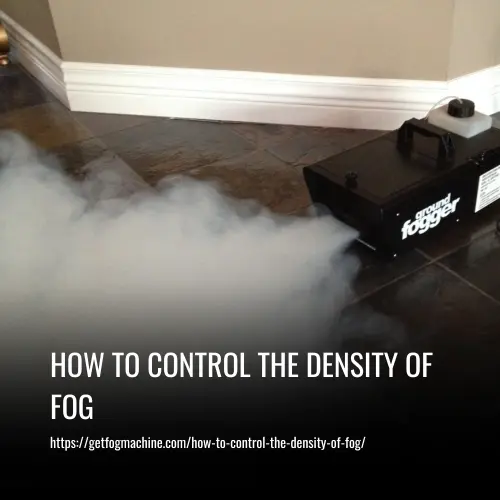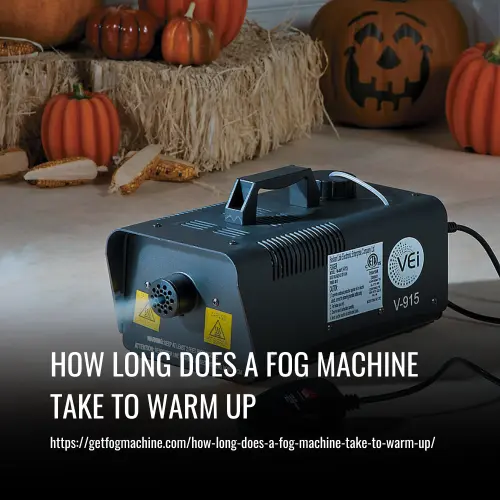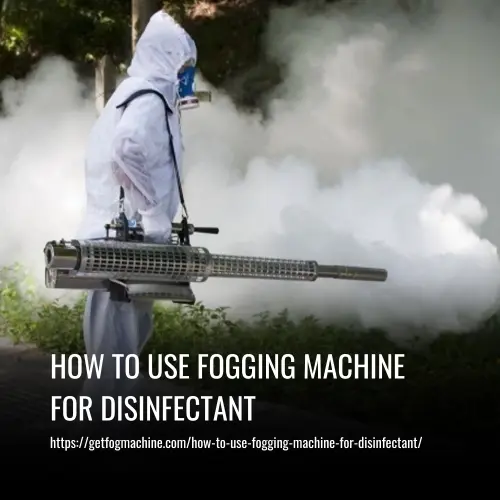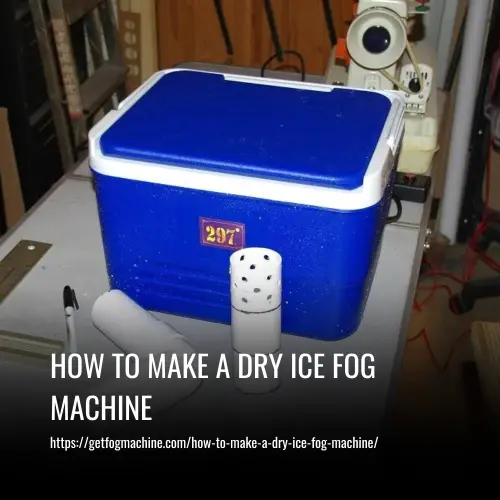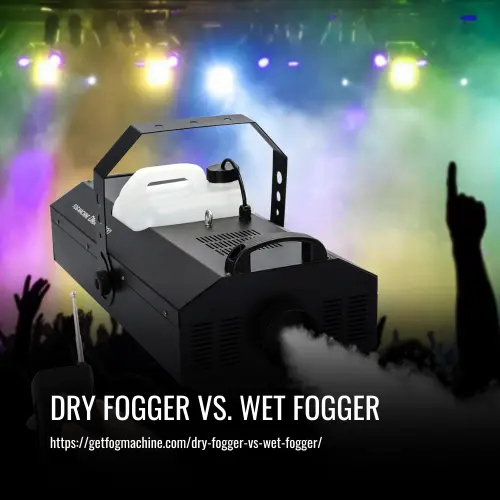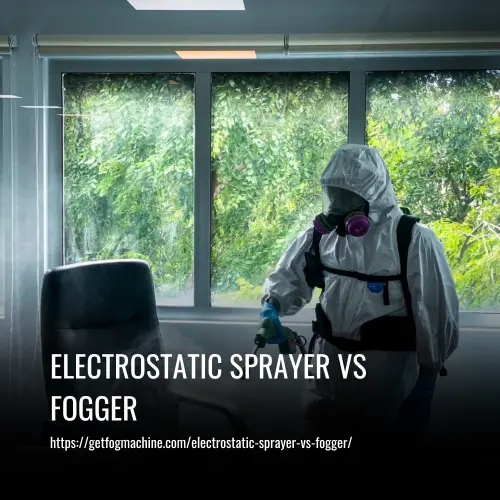What is Cold Fogging: A Comprehensive Guide
This post contains affiliate links. As an Amazon Associate, we earn from qualifying purchases.
Cold fogging is a method of disinfection and pest control that utilizes a machine known as a fogger to produce a fine mist of droplets. Unlike thermal fogging, cold fogging does not require heat to create the fog. The foggers push a solution, such as a hypochlorous solution or an acid mixed with stabilizers, through nozzles to create the fog.
The size of the fog droplets can be adjusted by changing the size of the nozzles, allowing for efficient coverage of large or small areas. Cold fogging is commonly used for indoor and outdoor applications, including insect control, mold control, and odor control. It is a valuable tool for pest control operators and can effectively disinfect and control pests in various settings.
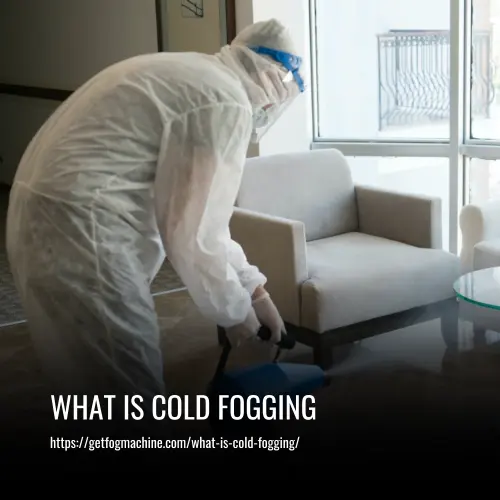
How to Cold Floggers Work
Cold floggers work by using an electric motor to create airflow and pressurize a solution stored in a tank. The electric motor, powered by either a battery or electricity, pumps the fog from the tank to the nozzles. The mist is then released through the nozzles, allowing for outdoor application or indoor fogging in narrow spaces and cracks in walls.
With the ability to control the droplet size in the 0.5-10 micron range, cold floggers are effective for insect control, odor control, mold control, and other pest management needs. This efficient and versatile piece of equipment is widely used by pest control operators for both indoor and outdoor pest control applications.
What are the Benefits of Cold Fogging
Cold fogging is an efficient and effective method of decontamination and pest control that offers several benefits compared to other fogging methods. Here are the key advantages of cold fogging:
1. Easy and Automatic Operation
Unlike other fogging methods, cold fogging is automatic and does not require constant human supervision. Once the fogger is positioned and switched on, the fog spreads throughout the room, reaching areas that are difficult to clean manually.
2. Adjustable Nozzle Sizes
Cold foggers have different nozzle sizes that can be easily adjusted. Smaller fog particles are ideal for penetrating narrow and cramped spaces, while larger fog particles are more effective in open areas.
3. Low Noise Levels
Cold fogging produces minimal sound compared to other fogging methods like thermal fogging. This makes it suitable for use in urban areas where noise pollution is a concern.
4. Long-Lasting Fog
The fog produced during cold fogging remains in the air for an extended period. This ensures the insects are exposed to the fog for a longer time, leading to better penetration, diffusion, and control.
5. Leak-Free Operation
Cold fogging has no leakage losses, ensuring that the fog remains concentrated and effective. This results in excellent penetration and control of insects and pests.
6. Versatile Applications
Cold fogging can be used in a variety of settings, including crowded places like greenhouses or indoor spaces. It is also safe to use in the presence of vehicles and motorbikes as the fog produced is microscopic.
7. Cost-Effective and Safe
Cold foggers use electricity instead of propane fuel, making them cheaper to operate and less fire hazardous. Additionally, the fog produced has no scent, making it user-friendly for both operators and individuals present during fogging.
8. Enhanced Hygiene
Cold fogging produces small-sized particles that leave minimal residues on surfaces. This is particularly beneficial for businesses that aim to improve hygiene levels and cleanliness.
What are the Disadvantages of Cold Fogging
Here are Some Disadvantages of Cold Fogging.
1. Lack of Visibility
One of the disadvantages of cold fogging is that the fog produced is microscopic and barely visible. This can make it challenging to detect the direction of the fog flow, especially when fogging open areas to control mosquitoes. In the presence of strong winds, the fog may drift unintentionally to other unintended zones, reducing its effectiveness.
2. Inhalation Risks
Another drawback of cold fogging is the risk of accidental inhalation by passers-by. Since the fog is invisible, individuals may unknowingly breathe in the fog or come into contact with it on their skin. Inhaling the fog can potentially lead to breathing problems and coughs, as the lungs may be exposed to the fog particles.
3. Maintenance and Repair Challenges
Cold fogging machinery, such as pressure pumps and electric motors, require competent skills for maintenance and repair. These complex systems often need professional assistance to ensure their proper functioning, increasing maintenance costs and requiring specialized knowledge.
4. Limited Penetration in Confined Spaces
Cold fogging typically produces larger fog particles compared to thermal fogging. As a result, the fog may not effectively reach or penetrate confined spaces. For example, when controlling mosquitoes, the larger particles may remain airborne for a shorter period of time, making it less likely to eliminate all mosquitoes in the area.
5. Slower Application
Most cold foggers are smaller in size compared to thermal foggers, resulting in a smaller insecticide solution volume. This requires more time to spray a similar area, making cold fogging a slower process compared to other fogging methods.
Safety Precaution Measures When Using a Cold Fogger
In order to ensure the safe and effective use of a cold fogger, it is important to follow certain precautionary measures. These measures are designed to protect individuals from potential health risks associated with the fogging process. Here are some key safety precautions to consider when using a cold fogger:
1. Attentively select the fog and read the instructions
Before using a cold fogger, carefully choose the disinfectant or insecticide solution. It is essential to thoroughly read and understand the instructions provided by the manufacturer. These instructions will give guidance on the proper use and application of the fog, ensuring its effectiveness and minimizing any potential risks.
2. Scrub the exterior surface before cold fogging
Prior to using a cold fogger, it is advisable to clean and scrub the exterior surfaces to be fogged. This helps to remove any debris or contaminants that may interfere with the effectiveness of the fogging process.
3. Trained professionals should perform cold fogging
Only trained individuals should carry out the cold fogging process to avoid potential health problems that may result from mishandling the solutions involved. Trained personnel have the necessary knowledge and experience to operate the fogger safely, minimizing any risks associated with the process.
4. Use personal protective clothing
Trained personnel should always use personal protective clothing, such as gloves and masks, to protect themselves from exposure to the fog. These clothing items can help minimize the risk of inhaling or coming into direct contact with the fog particles, reducing the potential for health issues.
5. Take special care where children and food are concerned
When fogging in crowded places, it is important to be cautious around children and food. People should be aware of restraining their children and covering food to prevent any accidental exposure to the fog.
By following these safety precaution measures, individuals can ensure the safe and effective use of a cold fogger while minimizing potential health risks.
FAQs
Cold fogging is a method of fogging used for disinfection, pest control, and mold control. Unlike thermal fogging, which uses heat to create the fog, cold fogging relies on high pressure to turn the solution into tiny particles. A special machine pumps the solution through a nozzle, creating a swirling airflow that breaks the liquid into small droplets. These droplets then spray out as a low-volume fog.
A cold fogger machine can operate by either forcing the solution through a high-pressure nozzle or passing it through a vortex of high-speed air. The pressure or airspeed breaks up the liquid into small droplets, which are then sprayed out as fog. This fog consists of tiny particles that can effectively reach and cover a wide area, ensuring thorough disinfection or pest control.
When used according to the manufacturer’s instructions and with proper precautions, cold fogging is generally safe. However, it is important to follow safety guidelines, such as wearing personal protective clothing and ensuring that children and food are kept away from the fogged area during the process. It is recommended to have trained professionals perform the fogging to minimize any potential health risks.
Cold fogging is effective for various applications, including Disinfection of indoor and outdoor spaces, Pest control, targeting insects and mosquitoes, Mold control, and odor control.
While cold fogging machines are available for purchase or rental, it is recommended to consult a professional pest control operator or service provider for effective and safe treatment. They have the expertise to assess the situation, select the appropriate chemicals, and ensure proper application for optimal results.
Cold foggers can be used in various settings, including homes, gardens, offices, commercial spaces, warehouses, sports facilities, clubhouses, restaurants, retail stores, hotels, rental cars, taxis, delivery vehicles, schools, creches, and daycares.
Cold fogging offers several advantages. It provides efficient insect control, as the small droplets can reach narrow spaces and cracks in walls. The ultra-low volume (ULV) fog generated by cold foggers helps to reduce the amount of liquid solution required for treatment. Cold fogging is also suitable for both outdoor and indoor applications, making it a versatile pest control method. Additionally, cold fogging can be used with special chemicals and disinfectant solutions to control unpleasant odors and maintain a clean and healthy environment.
Conclusion
Cold fogging is a revolutionary method that has the power to transform the way we clean and disinfect our spaces. With its ability to reach every nook and cranny, cold fogging is the ultimate solution for eliminating harmful pathogens and ensuring a safe and healthy environment.
So, say goodbye to traditional cleaning methods and embrace the power of cold fogging for a cleaner, safer future. Your health and peace of mind are worth it!

